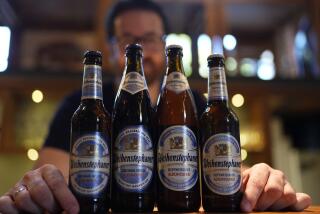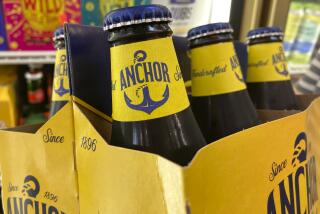Stone Brewing wants Germany, the land of Oktoberfest, to like American craft beers
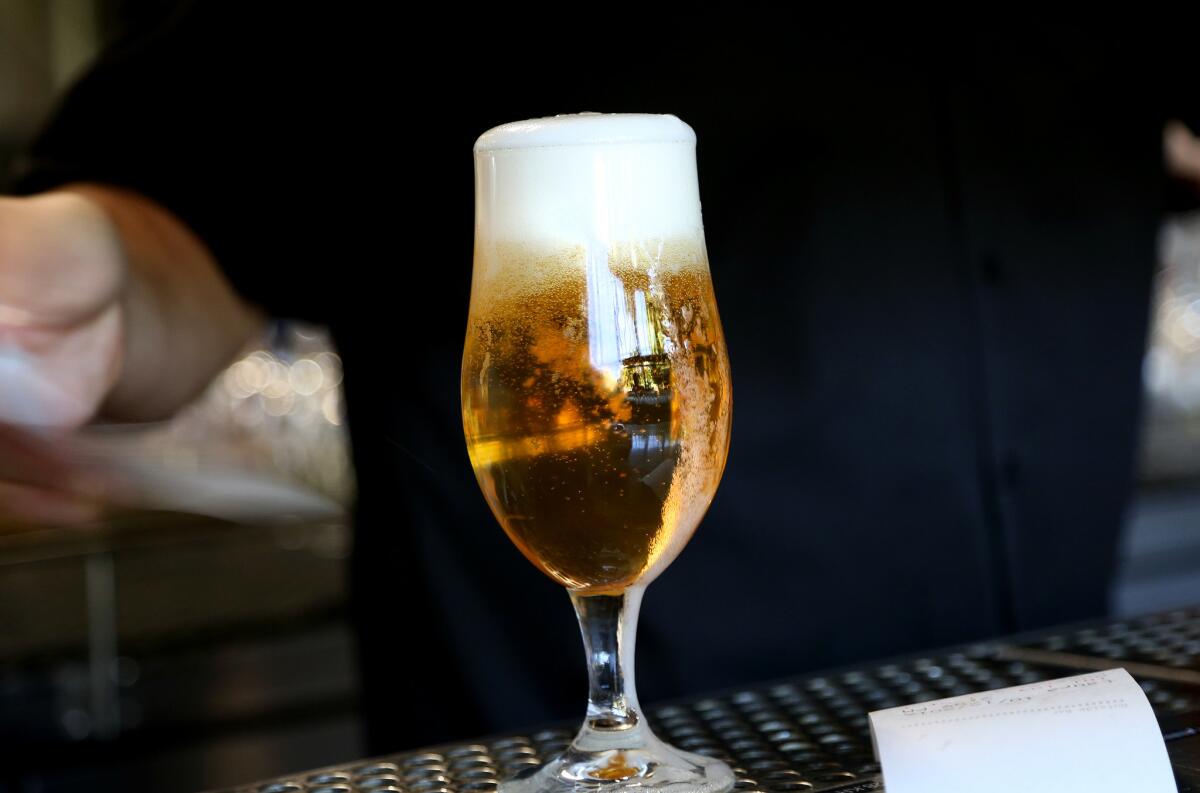
- Share via
When Stone Brewing released in 1997 its well-known Arrogant Bastard Ale, it was a hoppy revolt against an American beer market defined by bland corporate lagers. Now, thanks to craft brewers like Stone, it’s easy to find once obscure beers, from India pale ales to smoked porters, in dive bars and supermarket shelves alike.
So the fast-growing Escondido craft brewer is eyeing a new market to upend with its unorthodox brews — a place with a beer culture so deeply rooted in tradition that it’s governed by 500-year-old purity laws that restrict ingredients to only hops, barley, water and yeast.
For the record:
2:22 p.m. Feb. 22, 2025An earlier version of this story incorrectly stated that Stone Brewery was the first American craft brewer to open a brewery in Germany. It is among the first. One reference to the Wonderful Co. also misspelled the name as Wonder Co.
In June, Stone opened a brewery in Berlin, becoming one of the first American craft breweries to operate in Germany. Its arrival could prove a test not just for Stone but for a cohort of innovative American brewers that fueled the rise of the U.S. craft brewing scene but have not yet developed large global customer bases.
The move comes as craft breweries are facing slowing growth in the U.S. After years of rapid expansion, established craft brewers are bumping up against thick competition from an explosion of small breweries they inspired and behemoth brands that have refreshed their offerings to compete. Some independent brewers have sold off to beverage conglomerates or are taking a page from their book by setting their sights on global markets.
“2015 seemed to be the first year that growth may be reaching a plateau,” said Nick Petrillo, senior analyst at IBISWorld. “Craft beer isn’t stalling, but it’s going to reach a point of maturity in the sense its growth isn’t going to be as massive.”
Stone, which raked in more than $200 million in sales last year, isn’t immune to those pressures. In October, the company laid off about 60 employees, or roughly 5% of its 1,200-employee workforce. Dominic Engels, who took over as chief executive in September, called the cuts “the simple evolution of a business.”
“Restructuring was a necessary course correction we needed to do to match our growth trajectory and spending trajectory,” he said. “Pressures from Big Beer are a reality in the craft industry and will continue to impact the industry’s growth.”
This year, Stone has come a long way toward diversifying its business. In July, the company opened a brewery in Richmond, Va., with a restaurant slated to launch in 2018. Across from its main Escondido production facility, plans are underway for a Stone-branded hotel that will focus on beer (although Stone is licensing its name, not building it). It will also venture into wine country by opening a pilot brewery and tap room in Napa Valley next year.
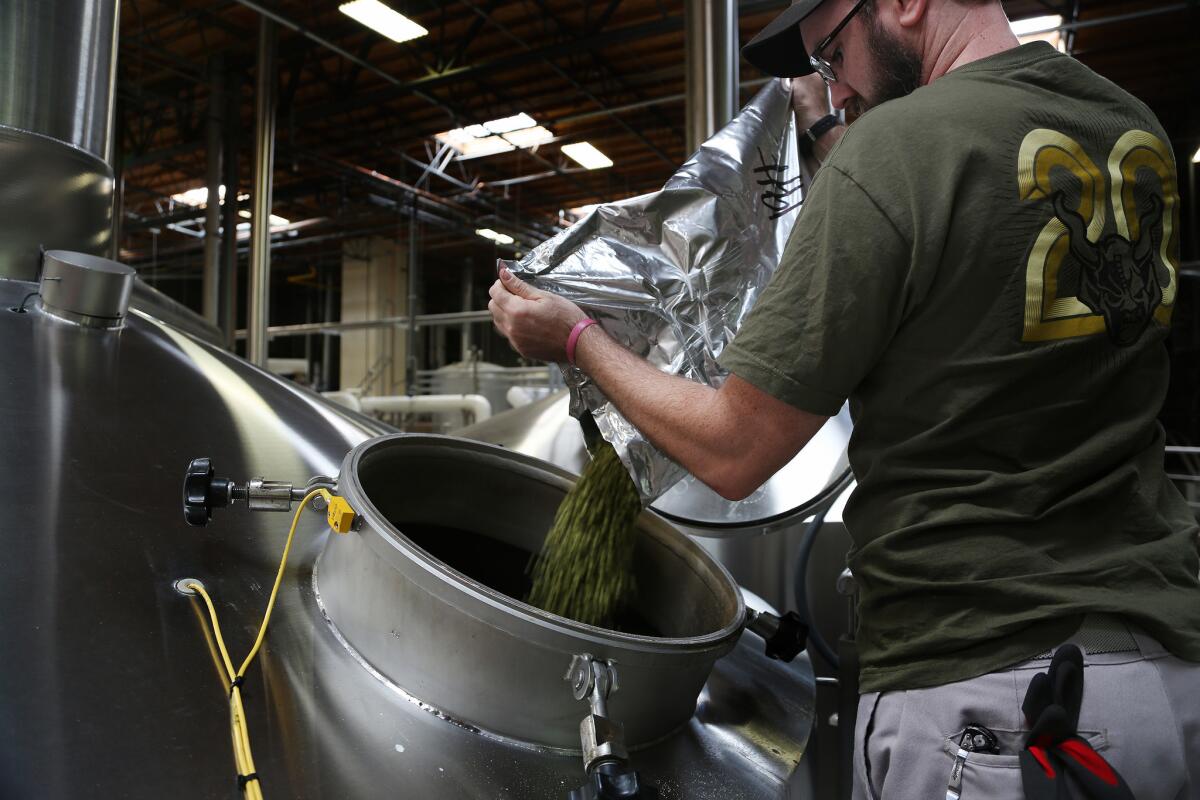
Such moves are intended to help separate the 20-year-old Stone from the hundreds of craft breweries that have popped up across the country. In San Diego County alone, there are 131 breweries, according to West Coaster magazine.
Stone’s move to Europe is part of a big bet on its future as a global beer player. In addition to the brewery, the beer maker also opened up a restaurant and beer garden there in September.
Engels said staking a claim in Berlin is part of Stone’s long-term plans to “shape” the overseas market. The 10th-largest U.S. craft brewery wanted to get a foothold early in Europe, which is chock full of regional influences and countries in different stages of appreciating craft beer.
“It’s something we need to start now so it can be of substance later,” he said. “There is no such thing as a homogeneous European approach that makes sense. It’s going to have to be done market by market.”
Some analysts say that Stone’s success overseas is no guarantee. Few Germans have familiarity with American beers, and those who have an opinion about them generally consider American beers mild and tasteless compared with local brews, said Rodger Wegner, managing director of the Assn. of Export Brewers of Northern, Western and Southwestern Germany.
“The import markets are quite limited still,” Wegner said.
Last year only about 132,000 gallons of beer from the U.S. were imported to Europe, he said, out of 172 million gallons imported in total. In 2015, imports accounted for about 6.8% of total domestic consumption, according to the German Brewers’ Federation. By comparison, imports to America made up nearly 16% of total domestic consumption last year, according to the Brewers Assn.
Imports into Germany — which mostly come from other European countries such as Belgium — have dropped in recent years. Overall sale of German beers, along with domestic consumption, have steadily slipped as well.
Some Germans have complained that the traditional nature of their nation’s beer — including the laws restricting ingredients — has stifled innovation and contributed to the drop in beer consumption. Those limitations, some have argued, have also hindered young Germans from starting their own craft breweries. Still, most Germans who have tried craft beer have tasted locally produced beers from those local German breweries, Wegner said.
Wegner said Stone was smart in choosing Berlin, which is a cosmopolitan city more open to outside influences than places like Munich, which is famous for its annual lederhosen-and-beer-soaked Oktoberfest festival.
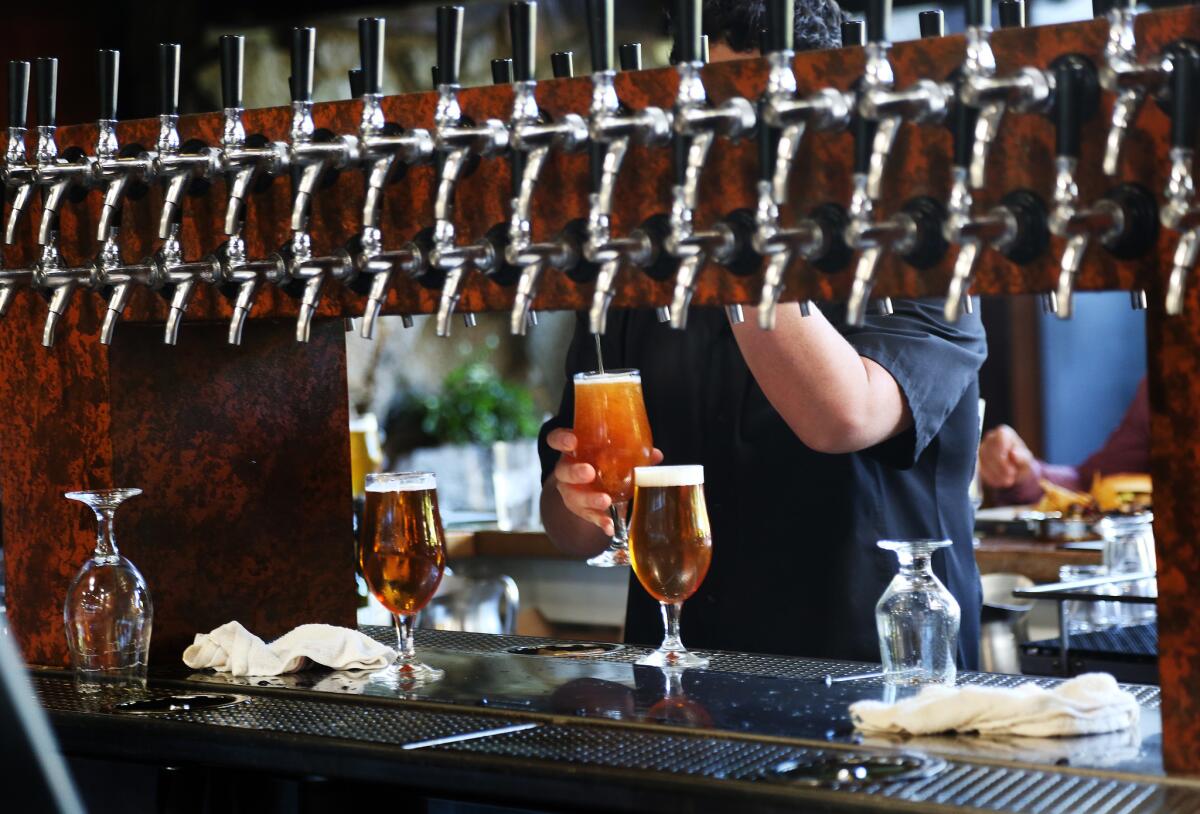
“In Munich the people are very proud of their own beer, and the cultural inheritance is much stronger in Bavaria,” he said. “It may be harder to convince them.”
As Stone has grown, co-founder Greg Koch said he realized the company needed new leadership to usher it into its next stage. He still serves as chairman, but ceded the CEO job to Engels — who has never worked in beer but instead has experience leading the international divisions of Wonderful Co., the Los Angeles snack and juice maker with annual sales of $4.8 billion.
“When we opened our doors 20 years ago … it was the largest company I had ever worked for,” said Koch, who describes himself as “a classic entrepreneur type.” “Having some additional ability for heavy lifting is a very important thing now.”
Engels, for his part, views his role as bringing new processes and organization that the company hasn’t needed until its expansion into the East Coast and Europe.
Now, Stone requires the kind of structure imperative for running a large business operating in multiple time zones, he said. That comes with new supply-chain issues, he said, that simply didn’t exist when the company was producing beer solely in Southern California.
“How do you service more customers when some of your products are made in one location and some products are made in other locations?” he said. “Those are the muscles that have to be built in a more purposeful way.”
Engels, who was born in Pasadena and calls himself “an accomplished rank amateur” with beer, said he’s also bringing a lot of what he learned at Wonderful Co., maker of the POM Wonderful pomegranate juice. He lived in Brussels for more than four years overseeing the pistachios and almonds business, as well as pomegranate juice in Europe, the Middle East and Africa. He also led the European division of another Wonderful product, Fiji Water.
”You can draw a lot of parallels through those experiences,” he said. In both cases, “you have a U.S.-centric or even California-centric mothership with international assets.”
A German major in college, he’s been able to draw on his language skills while visiting Berlin. “It’s my Manchurian candidate thing,” he joked. “As soon as I get there and people start talking, it’s pretty good.”
The future of Stone may help determine the direction of Southern California’s beer industry.
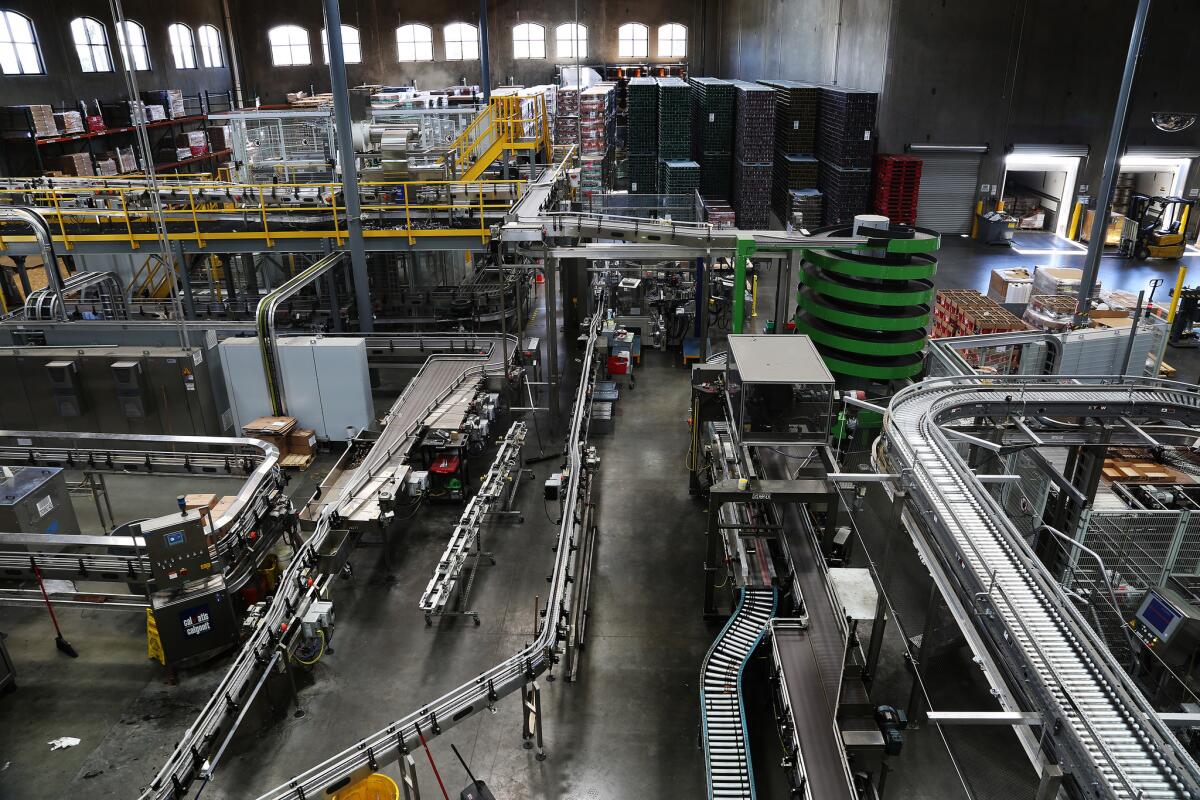
Attempting to tap into the interest in craft beers, huge brands have been swallowing smaller breweries. Last year, Anheuser-Busch InBev acquired Golden Road Brewing, L.A.’s largest craft brewer. MillerCoors snapped up Saint Archer in San Diego, while Constellation Brands bought San Diego’s Ballast Point for $1 billion.
Stone itself has taken on at least one outside investor. According to a June securities filing, private equity firm VMG Partners, which focuses on consumer products, agreed to sink $89.5 million into a limited partnership called VMG Stone Brewing Coinvestment.
Despite the outside investment, those in the local beer scene say that Stone — one of the first breweries to put San Diego on the map as an American beer capital — could be crucial to keeping alive the independent spirit of small brewers.
“They are the pioneers in San Diego,” said Scot Blair, a longtime San Diego beer aficionado who owns South Park Brewing Co. and several local pubs, including Hamilton’s Tavern. “As big as they are, they are the generals.”
Stone’s foray into Europe has already helped serve as a springboard for other local companies.
San Diego-based White Labs, which manufactures yeast for brewers, opened a production facility last year in Copenhagen to serve its European customers. A key reason to expand was to supply Stone’s Berlin brewery, said Chief Executive Chris White.
“This craft breweries movement is being exported actively,” he said. “A lot of Americans are being hired to be brewers in other countries.”
Both Engels and Koch said Stone has no other big expansion plans in the pipeline. Koch said that Berlin and Richmond were projects whose timelines ended up coinciding, creating the impression of a sudden spurt of aggression by Stone that was actually years in the making.
But Koch and co-founder Steve Wagner have another project underway. They announced earlier this year that they plan to create an investment group called True Craft to take minority stakes in breweries that might otherwise sell out to beverage giants.
“To see some of the comrades we have been fighting alongside now instead be tools of their corporate overlords against us — it can be a little disheartening,” Koch said.
Will Stone ever sell? The chance, Engels said, is approximately “zero point zero zero never percent.”
Follow Shan on Twitter @ByShanLi
ALSO
Storm soaks Southern California; LAX jammed
Uber pulls its self-driving cars off the streets of San Francisco
How 4 drug companies rapidly raised prices on life-saving drugs
More to Read
Inside the business of entertainment
The Wide Shot brings you news, analysis and insights on everything from streaming wars to production — and what it all means for the future.
You may occasionally receive promotional content from the Los Angeles Times.
